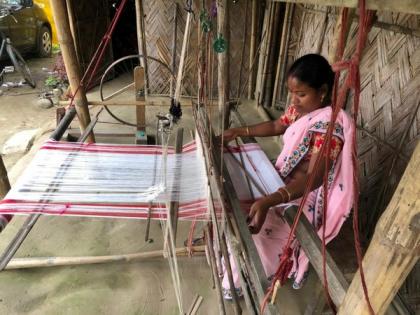By making 'Gamosa', Assamese women keeping state's tradition alive
By ANI | Published: March 24, 2021 03:45 PM2021-03-24T15:45:08+5:302021-03-24T15:55:02+5:30
Assamese Gamosa, which has been worn by Prime Minister Narendra Modi during his public rallies in the poll-bound state, is one of the most easily recognisable cultural symbols of the Assamese people, besides 'Tamol Pan' (Areca nut and betel leaf).

By making 'Gamosa', Assamese women keeping state's tradition alive
Assamese Gamosa, which has been worn by Prime Minister Narendra Modi during his public rallies in the poll-bound state, is one of the most easily recognisable cultural symbols of the Assamese people, besides 'Tamol Pan' (Areca nut and betel leaf).
Prime Minister Modi's repeated invocations of this cultural symbol have made it a politically important motif in recent times.
Gamosha is made manually in the villages of Assam.
In a village near Lakhimpur, almost half of the villagers -- mostly women -- can be seen weaving Gamosa and other traditional dresses by hand-operated wooden looms.
Assamese Gamosa is mostly woven out of white threads with colourful and intricate inlays in red. Gamocha is also known as 'Bihuwaan' as it is an essential part of the Bihu festival.
Speaking to , Rekha Muni Gogoi, a craftswoman said, "We do this work regularly. Simple Gamosa takes a whole day. If we make a designer Gamosa, it takes around two days' time."
While a normal Gamosa is sold at Rs 100, the designer ones range between Rs 300 to 1500.
Another craftswoman, Promila Devi Barua, said Gamosas is a matter of pride for them.
The craftspersons don't get any help from the government in the expansion of this form of craft. While some of the poor do it for their livelihood, others do it to keep up the tradition.
The government of Assam has made an act to save these handloom workers, according to the Handloom Reservation Act, 2010.
( With inputs from ANI )
Disclaimer: This post has been auto-published from an agency feed without any modifications to the text and has not been reviewed by an editor
Open in app